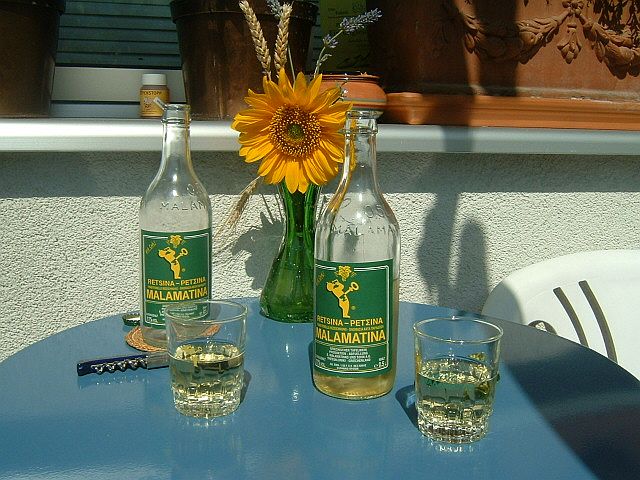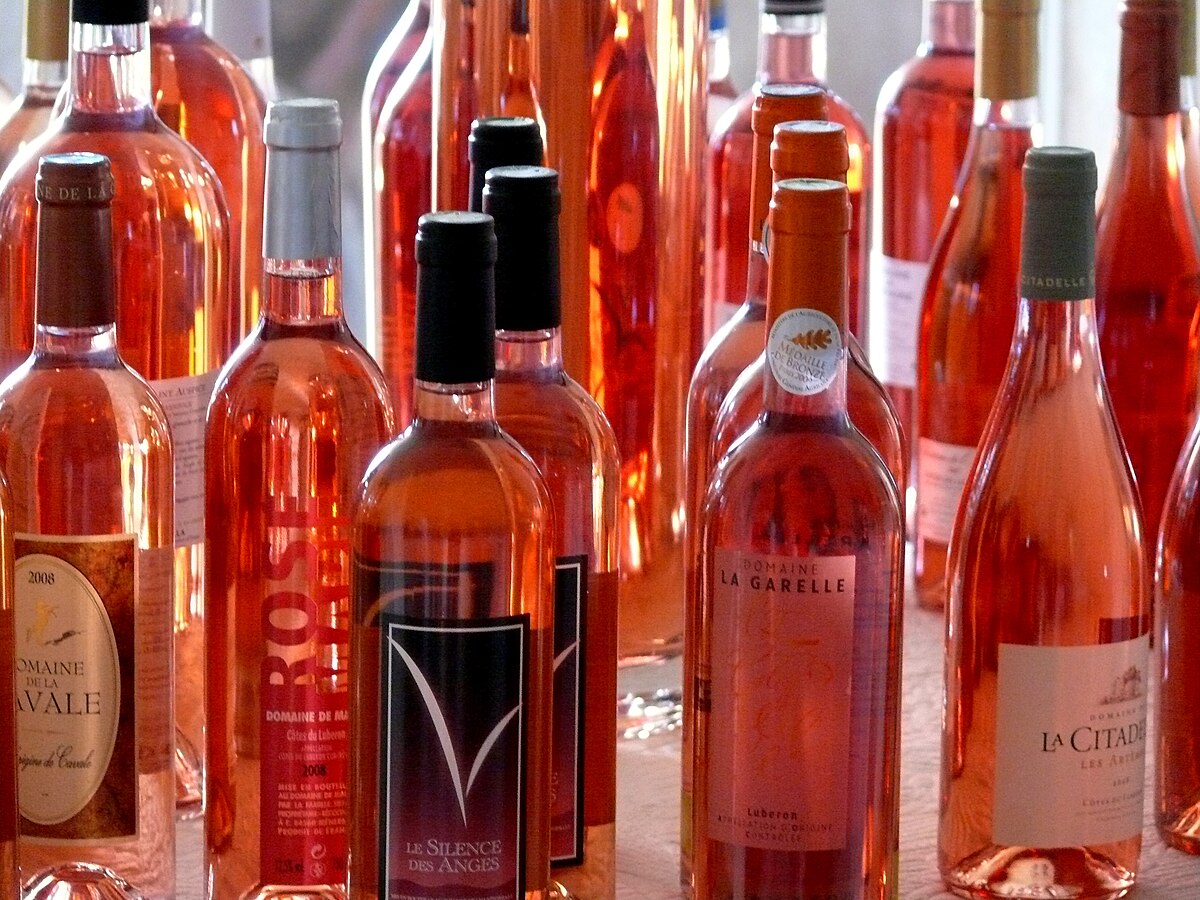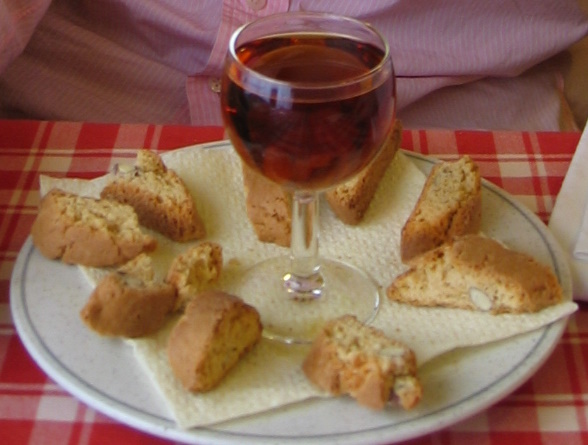Celebrate With Resinated Wine
Bring About The Good Times
Before the widespread use of barrels in storing wine, amphorae were used and sealed with Aleppo pine resin. Resinated wines thereby started deriving part of their flavor from exposure to tree resins. These wines therefore were also known as pine wine in Europe.
Quite a few wines infused with the resin of Aleppo pine trees. Its flavor has often been equated to turpentine by people who like the taste. Modern retsina wines are mostly made with poor, and thin wines. The addition of resin normally camouflages the aridity of the base wine with a sharp, invigorating sourness.
Retsina – The Best Greek Resinated Wine
Retsina, normally is a Greek rosé or white resinated wine. This wine type has been made for the past 2,000 years at least. The unique flavor is said to have originated from the practice of sealing amphorae wine vessels with Aleppo pine resin in ancient times.
Retsina is one of the best-known traditional Greek wines. However, the reputation of this wine has not always been positive. It had long overshadowed that of other acclaimed Greek wine labels.
Time To Wine Down
There are numerous written accounts regarding the production and consumption of Retsina in archaeological findings. It was known as ‘Retinitis Oenos’ in antiquity. Nevertheless, Retsina has been steadily produced for thousands of years now.
Here are some of the main reasons why pine resin was used during the vinification process:
- Resin-producing pine forests in Central Greece were close to vineyards.
- Pine resin was normally used to seal the mouth of ancient ceramic vessels utilized for coating, storage, and transportation of wine.
- This resin also prevents the wine from coming into contact with the air
- The resin was also added as a wine preservative
- Retsina wine barrels were also made of pinewood in later years.
- When used as an additive, pine resin also improved the composition of inferior base wines.
- Pine resin provides a particular aroma to Retsina. This is why vinification practice is still in use today.
Retsina wines are produced by adding the natural resin extracted from pinus halepensis (Aleppo Pine) during the fermentation process. The resin is then typically removed after it leaves its aroma in the wine. Savatiano, Degre, and Rhoditis are the main grape varieties commonly used in the production of Retsina.
Premium quality Retsina wines carry the balsamic aroma of pine. However, they do not inhibit the grape aromas while leaving a refreshing aftertaste similar to that of a carbonated refreshment. Nonetheless, Retsina is the ideal companion for the flavorful traditional Greek cuisine.
Resinated wines produced in Greece alone can carry the traditional designation of ‘Retsina’. The areas best known for production and permitted to carry this designation on the label are all located in the following regions of Central Greece:
- Attica (Mesogia)
- Evia
- Viotia
Retsina Is The Best-Kept Greek Secret
Exploring Retsina is an exploration of ancient and modern Greece. This wine has changed with time and has been shaped by history within a Greek tradition. This style of wine has been consumed with gusto for over two thousand years.
Read this post until the end to learn and dig deep into Retsina wine.
Resinated Wine is Making a Surprising Comeback
Adding flavorings and ingredients into wine at one time was not considered to be as appropriate as it is today. Additives and flavorings were essential to wine because they acted as preservatives and extended the drinkability of a wine. In Greece, they make a wine that is infused with sap from an Aleppo pine tree. This wine is called Retsina. It emerged from an ancient winemaking tradition that can be traced back to the 2nd century BC.
A Salty-Sweet Wine of Ancient Greece
We typically do not like to think of wine as a salty drink. Although there are wines with delicate saline-like flavors. However, they are not exactly salty. Nevertheless, salt was added as a preservative to Resinated Wine in ancient times as it was extremely perishable.
Retsina – The Wine of The Gods
Greek mythology depicts that Dionysus’s lover, Ampelo died after a goring by a wild bull. A grapevine then is said to have sprung up from where his body lay. Dionysus squeezed the grapes of that vine in sorrow which produced a juice that caused drunkenness to the one who drank it. Love, sorrow, and wine were associated henceforth.
Dionysus visited a region of Greece known as Attica at another juncture in Greek mythology. Even in modern Greece, Attica is known as the Attic peninsula. This region is home to the Greek capital of Athens.
Dionysus was met with great hospitality by the noble King Ikarios when he visited Attica. Upon noticing the fertility of the region, Dionysus gave Ikarios the gift of grapevines as a gesture of generosity. And from which he could eventually make wine. Ikarios briskly went to work with this gift and made wine.
The legend continues that Ikarios then made up his mind to share this gift. He is said to have shared some wine with passing shepherds. The shepherds did not understand how this wine could make them drunk and that the effect would eventually pass. So they misinterpreted this gift to be poisonous. They decided to retaliate and killed the Ikarios. Heartbreak, generosity, and tragedy thereby came to encompass the mythological birth of wine.
This gift of wine by Dionysus to Ikarios
in Attica is now inextricably linked to Retsina. And Attica is considered to be the birthplace of Retsina. Vineyards still surround Athens city and Savatiano grapes can often be found along the streets.
A Brief History of Retsina Wine
- Greeks and Romans were making wine and drinking it heartily centuries before there were appellations, oak barrels, and nice corks.
- However, their wines weren’t typically barrel-aged, nuanced, or delightful as we now know.
- Their wines were rough and stored in clay jars called amphorae. It was often loaded with additives and preservatives; salt being especially common.
- Amphorae vessels would then often be sealed in a peculiar way with pine resin being the sealant of choice.
- This was done to encounter the effect of oxygen. As oxygen is pernicious when it comes to making wine. Its effects take hold the drinkability of a wine plummets over time.
Retsina wine arose because of these factors. Greeks would fill clay amphorae with wine and subsequently seal it with pine resin. It was to keep out the oxygen. The aroma of the resin would then soak itself into the wine to create what we now call Retsina wine.
The introduction of oak barrels and other wine storage techniques came into effect across the land. Nevertheless, pine resin was so popular that Greek winemakers continued to include it in the wine despite the need to do so.
Some people attribute the popularity and the staying power of Retsina to other reasons. One is that the Romans were tearing across the land and blindly spreading their empire. Eventually, they dominated the Greeks and consumed all of their wine.
The Greeks retaliated to protect their wine. So they added pine resin so the invaders would not be able to withstand the taste. However, this anecdote does not have much historical evidence. But the underlying notion of outsiders not enjoying Retsina holds.
Resinated wine was initially not well received in many other parts of the world. It remains very much Greek to this day. It is so ideally Greek that the European Union classifies Retsina as a protected designation of origin and appellation for Greece.
Making of Retsina Wine
Retsina was historically infused with large amounts of pine resin right from sealing the amphorae. This was necessary to stave off the flavor-sucking oxidative assault from the air outside. Subsequently, Retsina would also be saturated with salt as yet another line of defense against the oxidation onslaught.
However, this is no more in practice.
Modern Retsina is predominantly made from Savatiano grapes. It happens to be the most planted white grape variety in Greece. Assyrtiko or Rhoditis grape varieties are sometimes added to the mix as well as other varietals found in the region. Nevertheless, Retsina wine is distinctly Greek irrespective of the grape type.
- The overall approach in producing the Retsina is mostly the same and almost similar to other winemaking processes.
- The process differs just a bit during fermentation when pieces of Aleppo pine resin are added to the mixture. This imparts a distinct resin aroma and flavor to the wine.
- This resin remains in the mix until the wine is filtered. This stage is known as racking. The wine is fed from one barrel to another using a gravity pump during this step.
- This process immensely clarifies Retsina and prepares it for the final stage of bottling.
- Retsina wine now is a far milder form than its resin-rich ancient counterpart. Moreover, the ancestor was also saline-heavy.
Modern Retsina
High salt-content wines nowadays are considered taboo and pose a serious health risk. Adding salt to wine is therefore forbidden. Modern Retsina wines from Greece are much more delicate in flavor than they were in historic times.
Resinated wines nowadays are typically fermented with fresh pine resin. And which is normally removed at the end of the winemaking process. Make it a point to taste some Retsina wines during your trip to Greece. It will show you the great potential they hold. Look out for Kechris, Ktima Eyoinos, and Papagiannakos, including one aged 7 years.
Best Retsina Wines
Making a statement on the best wine does not work. Individual choices are so varied that subjectivity rules the day. Nevertheless, some recommendations can be made for very good and affordable versions of this noble Greek wine.
- Kechris: Fondly known as ‘Tear of the Pine’, this Retsina wine is a highly rated, award-winning affordable wine. Kechris is made from Assyrtiko grapes and the pine resin does not dominate this drink. You can expect a fruity and mineral body of wine with aromas of citrus atop butter, ginger, rosemary, thyme, and vanilla.
- Tetramythos Retsina: This is yet another very good, and affordable Greek resinated wine. Tetramythos Retsina is made from organically grown Roditis grapes. This winery located in Northern Peloponnese only uses resin from pine trees adjacent to the vineyard. They even ferment the wine in traditional ceramic urns. This Retsina boasts flavors of lemon blossoms and white peach along with hints of pine.
- Retsina Papagiannakos: This is a top selection from the house of Retsina itself. Retsina Papagiannakos is an excellent resinated wine made from Savatiano grapes. These are mostly grown in fifty-year-old north-facing Attica vineyards. This wine comes along with aromas of lemon and pine infused in traditional style. It is a befitting example of what Retsina is all about.
The Taste of Retsina
Aromas of linseed oil and lime peel lead to flavors of apples and roses. Retsina summarizes a perfume that ends on a pine-and-lime, saline finish. However, wines made with Assyrtiko grapes tend to be more angular in their style, but they age longer. Retsina wines made with Savatiano grapes have a more acceptable taste. They have ripe apple and peach flavors, alongside an oily texture on the palate as well.
Retsina wines can be produced with several white grapes found around Greece. Some of the best examples of Retsina are made with Assyrtiko grapes as their base. It is what you can find in the Kechris “The Tear of the Pine” wines. These wines are structured to age over 7 years. Moreover, aged Retsina wines became more lush, round, and seemingly sweeter.
Ktima Eyoinos is yet another popular choice by Spata. It is made with Roditis and Savatiano grape varieties. Savatiano happens to be the most planted white grape variety in Greece. It is delightful that you can still find bush vines growing in and around Athens.
What Does Retsina Wine Taste Like?
Retsina is an old-world charming wine. It has a flavor profile that varies from one brand to another.
- Retsina wine is mild. The taste of which is neither too sweet nor too bitter.
- Retsina typically has a whiff of pine. Along with notes of lemon with a mild touch of salinity.
- Retsina normally is made from Savatiano grapes. It typically features apple and peach flavors. Other grape varieties will however impart their distinct fruitiness to the wine.
Retsina typically can be on a spectrum of pine resin strength from very mild to strong. So, don’t be surprised if you think you are drinking a pine cone. Then there are versions of Retsina wines that have been likened to turpentine.
Have faith if you end up trying the ‘Pine Cone’ version. Move on and get to taste other brands, they are not all like that.
Resinated wines generally have an acquired taste. It is generally best to be apprehensive of that before diving in. Give Retsina it’s fair due if you find it to be too strong.
Drinking Retsina wine is part of the Greek drinking culture. Cherish the cultural differences as it is worth taking the time to appreciate and find some beauty in them.
Resinated Wine Benefits & Side Effects
Resinated wine, like other wines, is an alcoholic beverage that is created from grapes. The sugars in grape juice during the process are converted into alcohol during fermentation.
It is clearly understood now that the alcohol content present in wine blocks various nerve pathways in the brain. Moreover, wine also contains antioxidants. This might, however, benefit the heart and our blood circulation as well.
People around the world for ages have used wine to prevent heart disease and stroke. Wine is also found to be useful for anxiety, cancer, diabetes, memory, thinking skills, and many other purposes. However, there is no scientific proof to support this. Nevertheless, don’t confuse wine with beer, or other alcoholic drinks. They are not the same.
Uses & Effectiveness
Resinated wine is possibly effective for –
- Heart Disease: Consuming moderate amounts of resinated wine reduces the risk of developing heart disease. However, ‘moderate amount’ is not clearly defined.
- Cognitive Function: It is found that daily consumption of wine seems to improve memory and thinking skills in older males. But moderation remains the key.
- Diabetes: Light to moderate amounts of consumption of wine are linked to reducing the risk of developing type 2 diabetes. It is also linked to reducing the risk of heart disease in people who already have diabetes. However, it is not yet clear that wine helps in managing type 2 diabetes.
- Digestive Tract Infections: These conditions can lead to ulcers like Helicobacter pylori or H. pylori. Consuming moderate amounts of wine can reduce the risk of H. pylori infection.
- Osteopenia: Drinking moderate amounts of wine might improve bone mass in postmenopausal adults.
Overall, consuming moderate amounts of wine in general seems to reduce the risk of death from any cause in people who are middle-aged and older. Wine, as such, may be useful for several other conditions, but there isn’t enough reliable information to approve that.
Side Effects
Resinated wine is likely safe for adults in moderation and when consumed orally. It would amount to about two 5-ounce glasses per day. However, drinking any more than this may be unsafe; And larger amounts may cause blackouts, drowsiness, trouble walking, vomiting, and other serious problems.
Other serious long-term health problems caused by consuming large amounts of wine include dependence, liver problems, and certain types of cancer. Moreover, there isn’t enough reliable information available to prove that wine is safe or what the side effects might be when applied to the skin.
Precautions & Warning
Consuming wine is likely unsafe during pregnancy as it can cause several birth defects and other serious problems to the unborn infant. Moreover, alcohol is linked to a significant risk of miscarriage and fetal alcohol syndrome, including behavioral and developmental disorders after birth.
So, do not consume wine if you are pregnant or breastfeeding as alcohol can pass through breast milk to cause abnormal development. Moreover, it can also disturb the sleep pattern of the infant or reduce milk production.
Other conditions that consumption of wine may trigger include asthma, high blood pressure, GERD (Gastro Esophageal Reflux Disease), gout, insomnia, pancreatitis, and stomach ulcers. Excessive consumption of alcohol may also worsen porphyria, liver disease, and mental health.
Stop consuming wine before scheduled surgery and avoid combining it with aspirin as it interacts to damage the stomach and cause ulcers. Other medicines with which wine interacts include Cisapride, Cyclosporine, Disulfiram, Erythromycin, and Felodipine.
NSAIDs and other anti-inflammatory drugs like Flibanserin, Phenytoin, and Warfarin also interact with wine. Stay away from wine if you are taking any antibiotics as most of them also interact with alcohol in wine.
It is advised that you consult a doctor whether it is safe for you to consume wine if you are taking any prescribed medications.
Moreover, remember that dosing is the key when you want to avail the benefits of wine. One drink is normally 120 ml. of wine or 12 oz of beer. However, these benefits are typically associated with light to moderate consumption.
FAQs
Is resinated wine safe for human consumption?
It would be wiser not to ever eat or drink anything from a surface that was covered with resin or alcoholic inks. Unless those products are marked as safe to be consumed or used for food. Including cups, cutting boards, platters, or trays coated with inks or resins.
Why is Greek wine so good?
Greek wines tend to be made from grape varieties that are barely planted elsewhere. For white wines Moschofilero, with its floral bloom and piney freshness, or Malagousia with stone-fruited fleshiness are available. Agiorgitiko with supple berry fruitiness and herbs and tang of Xinomavro is there for red wines.
Why is Retsina so affordable?
Retsina is a cheap wine. Simply because it is often oxidized and then flavored with resin to cover its inferior quality. Retsina, therefore, became synonymous with low-priced wines of poor quality in the Greek region.
Is resin harmful to health?
Most epoxy resin chemicals and their vapors can irritate your eyes, nose, and throat. Especially the resinated curing agents and solvents are worse. Some people are likely to develop headaches as a result of this irritation. These liquids can sting or severely damage the eye when they are splashed into the eye.
What food should be paired with Retsina?
Retsina wine is known to have herbal aromas. This helps it to pair very well with lamb, pork, and roast chicken.
Lemon, mint, and rosemary also pair very well with Retsina. Overall, you can go with strong flavors to match the flavor of the wine. Spicy and savory dishes also work very well. Especially those salty dishes with garlic or pickled components.
You should try pairing Retsina wine with Dolmades to go full Greek. Grape leaves stuffed with herbal rice mixture, boiled and made into small rolls will do if you are unfamiliar with Greek cuisine. They are extremely delicious but just a bit addictive at the same time.
Then consider putting together a traditional Greek Meh-Zeh platter. ‘Meze’ literally translates to ‘a taste.’ And this is just what this essential Greek platter is about. It is composed of small plates of hot and cold savory dishes like cheeses, olives, Pita bread, tomatoes, and even dolmades.
Such variations are seemingly endless. You may even find meatballs or octopus in some Meze varieties. Retsina also pairs well in some slightly unconventional ways. Like a mixer in cocktails, or as a cooking wine. Retsina Tonic and Retsina Mojito are both excellent drinks. They are worth trying. Retsina pairs very well as a cooking wine. It can be used to marinate beets, fish, and potatoes because of the herbal aromas of the wine.
Let The Good Times Roll On
Resinated wine can be viewed as a tricky pony. If you look at it through the lens of the normal modern wine experience. It is not a normal wine though.
However, Retsina is a modern manifestation of the ancient process. It is now meant to be enjoyed like most other wines without having to experience the terroir of where it came from. you drink to taste and maybe appreciate a degree of the culture that created it.
Retsina is meant to pull you strongly and unabashedly into an experience that shocks you. It brings you face-to-face with something that is very Greek and foreign. Ultimately, this could be a delightful experience.
Wine With Good Company
The way you drink Retsina can matter quite a bit. It is generally recommended to have it very cold and from a wide-open glass which helps to temper the aroma of pine. The odor will be trapped in a more acute glass and subdue the other elements of the wine.
Another argument is also made that Retsina should be consumed along with other elements of Greek culture. Including consuming this Greek wine in Greece itself while soaking in the beauty of the Mediterranean. Along with Greek foods, Greek music, and Greek language.
All these should be paired with Retsina consumption as per Greek customs. Maybe listen to Dimotiko and enjoy some dolmades while you have a glass or three of Resinated wine. Retsina, after all, is a cultural experience.




